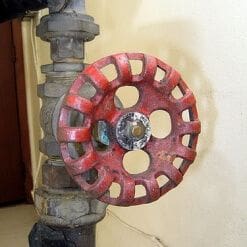
There are many green products that can increase the efficiency of your home while decreasing the costs associated with running it. We have compiled a list of just a few of the upgrades you can make, to live a little greener.
Water Pressure
Water Pressure Reducing Valve (hub of in home water conservation)
Any pressure coming into your home at more than 60 pounds per square inch (PSI) is to much. Water pressure regulated to 55-60 (PSI) use 1/3 less water flows at 50 lbs than at 100 lbs,. Therefore when you reduce the main pressure coming in from the City you will cut costs by 1/3. Additionally your plumbing fixtures, water heater, dishwasher, hoses, etc will not have the unnecessary push of water pressure against them and will last much longer. If you consider heating a portion of that wasted water and sewer charges, repair or replacement of appliances, the savings is much higher
Annual Savings can range from $50.00 to $150.00 and much higher
Toilets
Low Flow Toilets are designed to use less GPF than a regular toilet, sometimes as much as 20% to 60% less gallons of water per flush. The average toilet uses anywhere from 2.6 to 3.5 GPF than a high-efficiency toilet or WaterSense approved toilet.
Dual Flush Toilets are an emerging green plumbing technology that basically have two flushing options, a low flow flush and a higher flow flush, used accordingly.
Annual Savings can from range $90.00 to $180.00
Faucets
Low Flow Faucts can save over 2 gallons of water per day and usually flow at 1.75 to 2.5 gallons per minute. When shopping for new faucets, look for the WaterSense accreditation logo to ensure that you are purchasing a reliable high –efficiency faucet.
Annual Savings can from range $20.00 to $30.00
Shower Heads
Low Flow Showerheads can save over 2 gallons of water per day and usually flow at 2.0 to 2.5 gallons of water per minute.
Annual Savings can range from $20.00 to $30.00
Insulate Hot & Cold Water Pipes
Insulating your hot water pipes reduces heat loss and can raise water temperature 2ºF–4ºF hotter than uninsulated pipes can deliver, allowing for a lower water temperature settings. You also won’t have to wait as long for hot water when you turn on a faucet or showerhead, which helps conserve water.
Annual Savings can range from .05-1.5% in energy costs
Add Hot Water Return Pump-Metland Pump
Hot water in 15-30 seconds (depending on the size of the home and water system) without wasting a single drop and by uses only a fraction of a penny’s worth of electricity. The loss of water while waiting could be 3 to 7 gallons. Since most homeowners do not stand and wait for hot water to arrive, another 1 to 3 gallons may be lost before they notice hot water has arrived. Extends water heater life, reduces sewage pollution, reduces air pollution, high R.O.I. (Return On Investment). Can turn down water heater to “low” since water that gets delivered to a fixture is now hotter. Water heaters are generally set, at time of installation, to temperatures of 140° to 150°. If the water heater is turned down, each 10° reduction can save 3% to 5% on water heating costs.
Annual Savings can range from $325.00 to $500
Water Heaters
Solar Water Heaters
Perhaps the most widely used green energy technology, solar hot water can provide year-round hot water and preserve the environment by eliminating carbon dioxide emissions and reducing harmful pollutants. Solar energy is one way that consumers can save considerable amounts of energy. On average, if you install a solar water heater, your water heating bills should drop 50%–80%. It will also help to protect consumers against future gas and electricity shortages as well as price increases.
Annual Savings can range from $500.00 to $800.00
Tankless Water Heaters
Unlike the antiquated tank water heater that heats the same water over and over 24 hours a day, the tankless senses demand heating water when flow is detected and hot water is always available
Estimated annual energy costs Tankless/$223.00, 40 gallon gas $281.00, 40 gallon electric $492.00.
Annual Savings can range from $58.00 to $269.00
Water Heaters-Lower Temperature
You can reduce your water heating costs by simply lowering the thermostat setting on your water heater. For each 10ºF reduction in water temperature, you can save between 3%–5% in energy costs. Although some manufacturers set water heater thermostats at 140ºF, most households usually only require them set at 120ºF. Water heated at 140ºF also poses a safety hazard—scalding. However, if you have a dishwasher without a booster heater, it may require a water temperature within a range of 130ºF to 140ºF for optimum cleaning.
Annual Savings can range from 3-5% in energy costs